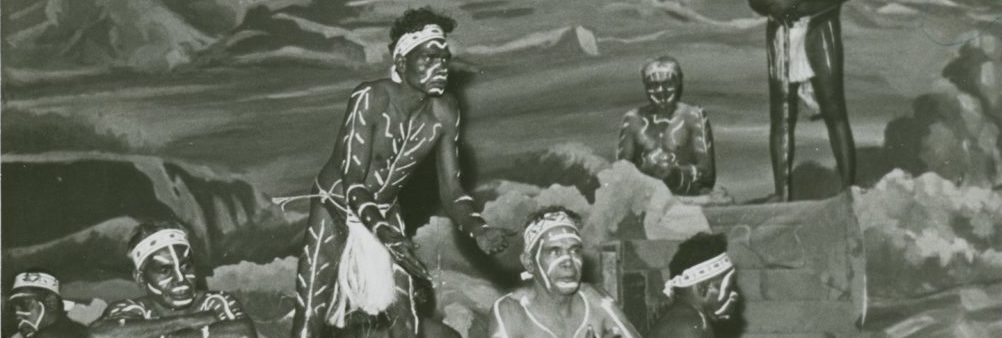Australian Research Council Discovery Project
Investigators
Linda Barwick, University of Sydney
Jakelin Troy, University of Syndey
Lyndon Ormond-Parker, University of Melbourne
Matt Poll, University of Sydney
Tiriki Onus, University of Melbourne
Amanda Harris, University of Sydney
Jacqueline Shea Murphy, University of California (Riverside)
Find Out More
Visualisations of Reclaiming Performance research
Events
Indigenous Music and Dance Conference
At defining moments in Australia’s developing nationhood, Aboriginal and Torres Strait Island performers brought music and dance to national and local stages. In the middle decades of the twentieth century, a performance by the Wallaga Lakes Gumleaf Band from southern NSW heralded the 1932 opening of the Sydney Harbour Bridge; in the 1940s Bill Onus recruited interstate performers for tourist shows in Melbourne; Jimmy Little Senior led a vaudeville troupe along the Murray River during the 1950s; and Aboriginal music and dance featured at the opening of the 1956 Melbourne Olympics and at diplomacy events coinciding with the various Royal Visits of the era. Who were the individuals involved in these public performances, and why were they taking part? Underlying these events is a rich but largely hidden and dispersed history of ongoing Aboriginal cultural engagement, political mobilisation, and reclamation through performance.
In this project, our multidisciplinary team—musicologists, linguists, dance historians, digital humanists, curators, artists and cultural historians—are remapping the ‘long’ Assimilation era (1935-75) by excavating, curating, and mobilising a corpus of public cultural records of the period. We are augmenting this corpus with present-day interpretations and responses from personal archives, oral histories, exhibitions and creative works. Focusing on urban and regional networks in south-eastern Australia, we are re-evaluating the artistic legacy of public performances by Aboriginal people (music, dance and associated cultural practices) to reclaim these rich and hybrid histories for broad cultural benefit. The dates 1935-1975 encompass key political events leading up to the official adoption of Assimilation as government policy in 1937 through to the introduction of the Racial Discrimination Act in 1975.
This project will produce the first performance-centred account of the Assimilation period. Throughout this period, Aboriginal and Torres Strait Islander people responded innovatively and insistently to assimilationist policy in order to maintain, enliven and develop their culture and its diversity and reach, and to build networks across the country to mobilise a pan-Aboriginal identity that could demand recognition. This study provides a new lens for considering how the cultural agency exercised by Aboriginal people came to be ignored in the twentieth century, ultimately leading to the deficit view of Aboriginal peoples and communities prevalent in government and public thinking. By investigating the unfolding of a resilient, dynamic and innovative Aboriginal resistance to the predicted decline of all things Indigenous in Australia, this project will shed new light on how, far from losing agency in their own lives, Aboriginal people resisted governments and their officials, laws and policies and the apathy of the wider public by continuing to perform their identity using uniquely Aboriginal forms of performative practice.
See visualisations of some of the events and people that we’re exploring on our project site:
